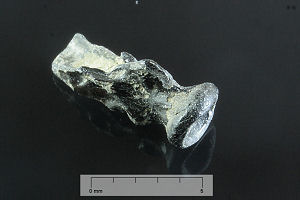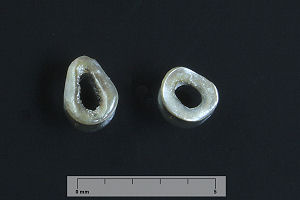|
Hadrodus priscus
(Leidy)
Age Cretaceous - Occurrence Uncommon*
In New
Jersey the fossil remains of the boney fish Hadrodus priscus is
represented by two types of teeth. The front (oral) teeth, a crushing
type arranged in irregular rows and uneven in size and the back pharyngeal teeth
which formed a comb like
structure thought to retain food and possibly help reduce it by crushing
or grinding. All the front teeth Iíve found to date have been identified
by Earl Manning as being juvenile teeth. These
are small (3-4 mm ≈ 1/8th inch in diameter), having a round or
oval translucent button type shape which often shows a heavy wear pattern.
The incisors have an eerie similarity to a human baby tooth. The back
pharyngeal teeth are small and flat with a hook-like appearance. It's
thought that the young lived in protected near shore waters, while the
adults lived in deeper, open water environment.
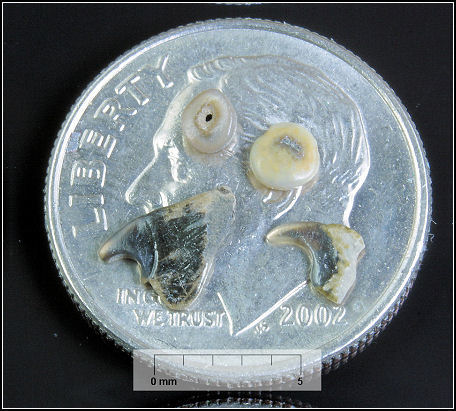
Hadrodus priscus
Top - Front (oral) teeth - Bottom - Back pharyngeal (gill) teeth
Cretaceous
Monmouth County, NJ
Scale 5 mm = 0.197 in
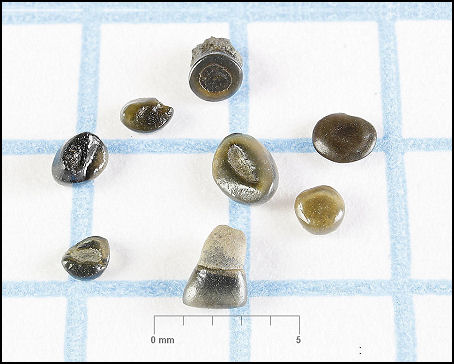
(Earl
Manning, pers. comm. 2012)
Based on the transparency and very small size (they also often have tiny
"dimples" on the worn
occlusal surface), I'd say all of these are juvenile (adult teeth
are far larger) Hadrodus priscus teeth, they just aren't all from
the same part of the jaws. The circular and oval ones are oral (cavity)
teeth, equivalent to the
vomerine (up.) and prearticular (lw.) toothplate teeth of
pycnodonts. The two on the rt. are only different in being less
worn, so that the dentine doesn't show up in the middle of the occ.
surface. The incisor-like tooth in the bottom center is an incisor
Scale 5 mm = 0.197 in
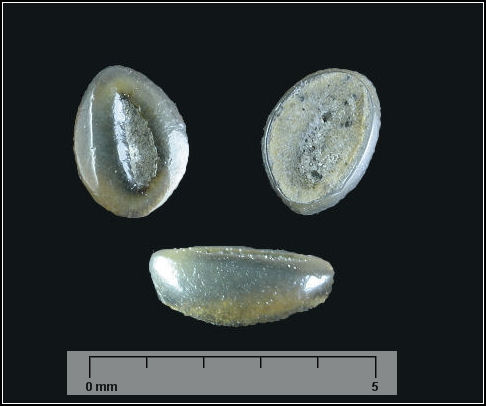
One of the more common oval forms of the front teeth.
Scale 5 mm = 0.197 in
Hadrodus priscus
Left - Front tooth with root - Right - Heavily worn teeth show as
circle, easy to miss.
H. priscus did not shed it's front teeth and many specimens will
show heavy wear patterns.
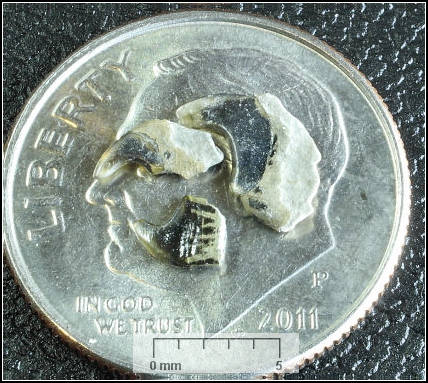
Hadrodus priscus
back pharyngeal teeth.
These teeth would have been found near the back of the throat arranged
in a comb-like structure
and is thought to help further process food.
Scale 5 mm = 0.197 in
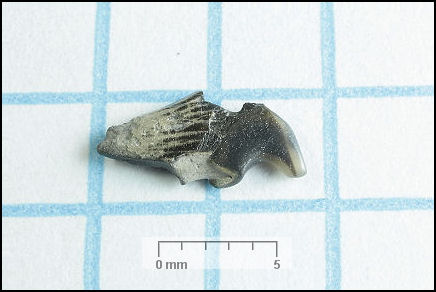
At just a little under 1/2 inch this is this large
pharyngeal
tooth and retains most of the root.
Note the transparent nature of the hook on the right.
*Commonality - I've lumped both the front oral teeth
and back
pharyngeal
teeth
together although the pharyngeal teeth are found much more frequently.
Return to top of page
|



